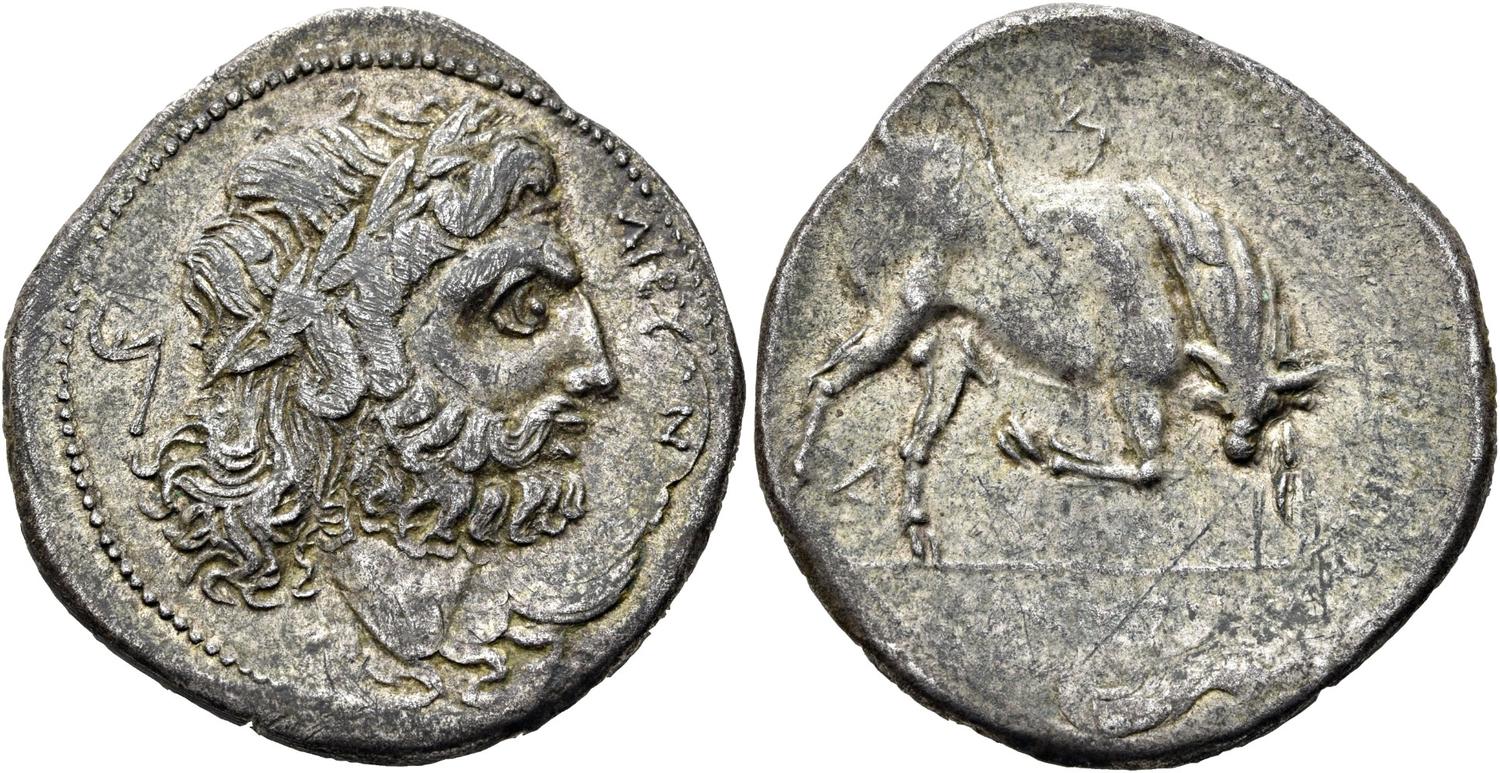240 BCE - 237 BCEΛΙΒΥΩΝ | ΛΙΒΥΩΝ
Overstruck variety
Ref carthage horse and star.jpg
[2]
|
|
Sale(s)Sale(s) ᵖ:
|
Triton, III, 1999, 669 = Gorny & Mosch Giessener Münzhandlung, 269, 9 March 2020, 689
|
| Private collection(s)Private collection(s) ᵖ:
|
Dr G. W. collection ; M. A. Sinton collection
|
|
Description
| ObverseInscription or printing placed on the obverse.:
|
ΛΙΒΥΩΝ (Greek) Head of Zeus right, wearing laurel wreath. Border of dots.
|
ReverseInscription or printing placed on the reverse.:
|
ΛΙΒΥΩΝ (Greek) Bull charging right. Above, 'M'(Punic letter). Border of dots.
|
Mint and issuing power
Chronology
| FromIdentifies the initial date in a range assigned in a numismatic context. 240 BCE toIdentifies the final date in a range assigned in a numismatic context.. 237 BCE
|
Hellenistic 323-30 BC  periodTime period of the numismatic object. periodTime period of the numismatic object.
|
Physical description
| MetalThe physical material (usually metal) from which an object is made.: Billon http://nomisma.org/id/billon
|
WeightWeight of the numismatic object (in grams). in grams: 12.712.7 g <br />12,700 mg <br />
|
DenominationTerm indicating the value of a numismatic object. Examples: tetradrachm, chalkous, denarius.: 2 shekels 
|
|
|
|
|
References
Description
| ObverseInscription or printing placed on the obverse.:
|
Wreathed head of Tanit left
|
ReverseInscription or printing placed on the reverse.:
|
Horse standing right, 7-point star above
|
Mint and issuing power
Chronology
| FromIdentifies the initial date in a range assigned in a numismatic context. 264 BCE toIdentifies the final date in a range assigned in a numismatic context.. 241 BCE
|
Hellenistic 323-30 BC  periodTime period of the numismatic object. periodTime period of the numismatic object.
|
Physical description
| DenominationTerm indicating the value of a numismatic object. Examples: tetradrachm, chalkous, denarius. ᵖ:
|
2 shekels 
|
|
|
References
References
- ^ Robinson, Edward Stanley Gotch (1953), "A Hoard of coins of the Libyans", The Numismatic Chronicle, ser. 6, vol. 13, n° 43, p. 27-32, pl. 2-3
- a b Alexandropoulos, Jacques (2007), Les monnaies de l'Afrique antique (400 av. J.-C.-40 ap. J.-C.), Presses universitaires du Mirail, Toulouse, 507 p., 17 pl.
- ^ Viola, Mauro R. (2010), Corpus Nummorum Punicorum, Numismatica Varesi, p.iv, p.960
- ^ Jenkins, Gilbert Kenneth (1992), Sylloge Nummorum Graecorum: Royal Collection of Coins and Medals. Danish National Museum, volume 8. Egypt, North Africa, Spain, Gaul. Sunrise Publ., Inc.

